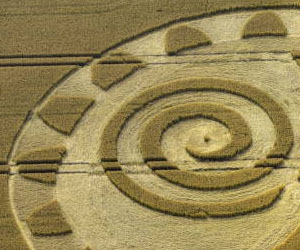


Hypnosis For Weight Loss

The quest for effective and sustainable weight loss has led many individuals to explore a variety of methods, ranging from diets and exercise to surgery and medications. One increasingly popular and non-invasive approach to weight loss is hypnosis. Hypnosis for weight loss, also known as "weight loss hypnotherapy," taps into the power of the subconscious mind to address underlying issues that contribute to overeating and unhealthy eating habits. In this article, we explore the concept of hypnosis for weight loss and its potential benefits.
Hypnosis, characterized by a state of focused attention and heightened suggestibility, can help individuals uncover and address the emotional and psychological factors that drive their eating patterns. By accessing the subconscious mind, hypnotherapy aims to reprogram beliefs and behaviors related to food and body image, making it a valuable tool for those seeking to shed excess pounds and maintain a healthier lifestyle.
Here's how hypnosis can play a role in the weight loss journey:
Addressing Emotional Eating: Many individuals turn to food as a way to cope with stress, anxiety, or other emotional triggers. Hypnotherapy can assist individuals in recognizing and dealing with these emotional drivers, helping them find healthier ways to manage their feelings.
Changing Eating Habits: Hypnotherapy can promote a shift in eating habits by reducing cravings for unhealthy foods and promoting a desire for nutritious options. Individuals undergoing weight loss hypnotherapy may find themselves naturally gravitating toward more balanced and wholesome choices.
Enhancing Motivation: Weight loss often requires a high level of motivation and commitment. Hypnotherapy can bolster an individual's motivation to exercise regularly and stick to a healthy eating plan, making it easier to achieve and maintain weight loss goals.
Overcoming Plateaus: Weight loss journeys can sometimes reach plateaus, where progress stalls. Hypnotherapy can help individuals push through these plateaus by reinforcing their commitment to change and addressing any psychological barriers that may be holding them back.
Stress Reduction: Hypnosis is well-known for its stress-reduction benefits. Lowering stress levels is essential in weight loss, as chronic stress can lead to emotional eating and the accumulation of abdominal fat. Hypnotherapy can help individuals manage stress more effectively.
It's crucial to emphasize that hypnosis for weight loss is not a quick fix or a magic solution. It requires commitment, practice, and a genuine desire to change one's relationship with food and overall lifestyle. Results may vary from person to person, and individuals should approach hypnotherapy as part of a comprehensive weight loss plan that may include dietary changes and regular exercise.
Moreover, individuals seeking weight loss hypnotherapy should work with qualified and experienced hypnotherapists who understand the intricacies of weight management and can tailor the sessions to their specific needs and goals.
Hypnosis for weight loss offers an innovative and potentially effective approach to addressing the emotional and psychological factors that contribute to overeating and unhealthy eating habits. By harnessing the power of the subconscious mind, individuals can work towards sustainable and lasting weight loss. While it's not a standalone solution, when incorporated into a holistic weight loss plan, hypnotherapy can be a valuable tool in the journey toward a healthier, slimmer, and more balanced life.
A Testament To Man's Best Friend
 Unconditional Devotion: One of the most striking aspects of canine loyalty is its unconditional nature. Dogs don't judge, hold grudges, or question their owners. They offer their love, trust, and devotion without reservation. This unwavering loyalty can have a profound impact on the lives of those fortunate enough to experience it.
Unconditional Devotion: One of the most striking aspects of canine loyalty is its unconditional nature. Dogs don't judge, hold grudges, or question their owners. They offer their love, trust, and devotion without reservation. This unwavering loyalty can have a profound impact on the lives of those fortunate enough to experience it.
Trust And Dependability: The loyalty of dogs is built on trust and dependability. Dogs place their trust in their human companions, knowing that they will be cared for, loved, and protected. In return, humans trust their dogs to be steadfast, reliable companions. This mutual trust forms the foundation of the bond that brings comfort and stability to both parties.
Emotional Support: Dogs have an uncanny ability to sense their owner's emotions and respond with empathy. When their human companions are sad, stressed, or anxious, dogs often offer comfort and solace. This emotional support is a testament to their loyalty and their unique capacity to provide unwavering companionship.
Protection And Fidelity: Dogs have a natural protective instinct, and this is often an expression of their loyalty. They will defend their owners when they sense a threat, whether it's a stranger at the door or an intimidating situation. This protective loyalty has made dogs trusted allies and guardians throughout history.
The Benefits Of Canine Loyalty: The loyalty of dogs offers numerous benefits to both dogs and their human counterparts. For humans, the companionship and unwavering loyalty of a dog can reduce stress, anxiety, and depression. It provides a sense of security and emotional support that is unparalleled. The loyalty of a dog can alleviate feelings of loneliness and isolation, fostering a sense of belonging and purpose.
Unraveling The Intricate Patterns In Fields
 Historical Roots
Historical Roots
The history of crop circles can be traced back to the early 1970s when the first reports of strange, circular patterns in crops emerged in the English countryside. These early formations were simple circles, far less intricate than the elaborate designs we see today. However, over the years, crop circles have evolved into complex geometric shapes, including spirals, fractals, and even depictions of animals and celestial bodies.
Intricate Geometric Patterns
One of the most striking aspects of crop circles is their precision and intricacy. These formations often display geometric shapes and mathematical properties that challenge conventional explanations. The precision with which they are created has left many experts scratching their heads, as achieving such accuracy in a short amount of time is a challenging feat for human-made formations.
Debates And Skepticism
The origin and purpose of crop circles have sparked numerous debates. Skeptics argue that the majority of crop circles are the result of elaborate hoaxes carried out by artists and pranksters using simple tools, like boards and ropes. They contend that these circles serve as a form of artistic expression or as a way to play pranks on the public.
Natural Phenomena And Weather Patterns
Some crop circle enthusiasts suggest that certain formations may be attributed to natural phenomena, such as unusual weather patterns or whirlwinds. While this theory explains some simpler patterns, it falls short when trying to account for the complexity and precision of many crop circles.
Deciphering The Enigma
 Deciphering Nostradamus' cryptic language often involves attempting to find connections between his quatrains and historical events. Believers argue that his predictions have accurately foretold significant occurrences, while skeptics assert that the vague and flexible nature of his language allows for post-event retrofitting. This post-event retrofitting is a process in which quatrains are interpreted in a way that aligns with past events, but it is a subjective exercise that can yield different results based on the interpreter's perspective.
Deciphering Nostradamus' cryptic language often involves attempting to find connections between his quatrains and historical events. Believers argue that his predictions have accurately foretold significant occurrences, while skeptics assert that the vague and flexible nature of his language allows for post-event retrofitting. This post-event retrofitting is a process in which quatrains are interpreted in a way that aligns with past events, but it is a subjective exercise that can yield different results based on the interpreter's perspective.
Some interpretive strategies include looking for numerological patterns, anagrams, and hidden meanings within the text. Believers often point to specific quatrains that they argue are validated by historical events, such as the French Revolution or the rise of Adolf Hitler. However, skeptics claim that this can be a form of cherry-picking, where only those quatrains that seem to align with history are emphasized, while the majority that do not are ignored.
Moreover, Nostradamus' quatrains are subject to translations, which can further complicate the process of deciphering his cryptic language. Translations may vary in their interpretations of the original French verses, leading to different outcomes when attempting to match them with historical or contemporary events.
One challenging aspect of deciphering Nostradamus' quatrains is the time lag between his writings and the events they supposedly predict. The gap of centuries between his time and the events in question can make it difficult to establish a direct correlation. Skeptics often emphasize that Nostradamus wrote in a historical context that was vastly different from the modern world. The societal, political, and technological landscapes have evolved significantly, making it challenging to attribute his writings to contemporary issues or phenomena.
What Your Feline Friend Is Telling You
 1. Straight Up And Quivering: When a cat's tail is held high and quivering at the tip, it's typically a sign of excitement and anticipation. Your cat may be thrilled to see you, play, or receive a treat.
1. Straight Up And Quivering: When a cat's tail is held high and quivering at the tip, it's typically a sign of excitement and anticipation. Your cat may be thrilled to see you, play, or receive a treat.
2. Puffed Up And Arched: A puffed-up tail, similar to a bottlebrush, is a classic sign of a frightened or threatened cat. It's an attempt to make themselves appear larger and more intimidating.
3. Straight Up And Fluffed: When a cat's tail is held high and fluffed, it indicates that they are feeling defensive or agitated. This often occurs when they encounter a perceived threat.
4. Low And Tucked Between Legs: A cat tucking its tail between its legs is a clear sign of fear or submission. It's an attempt to make themselves appear smaller and less threatening.
5. Slow Side-To-Side Swishing: A tail swishing slowly from side to side is a sign of a cat's irritation or annoyance. It's a warning sign that they may become agitated if the source of their annoyance continues.
6. Rapid Side-To-Side Swishing: A tail swishing rapidly from side to side often signifies that a cat is highly agitated and potentially aggressive. This is a clear signal to back off and give the cat space.
A Positive Reinforcement Approach To Effective Learning
 Capture Behavior: Observe your dog and click the moment they exhibit a desired behavior. For example, if you're teaching your dog to sit, click the instant their rear end touches the ground.
Capture Behavior: Observe your dog and click the moment they exhibit a desired behavior. For example, if you're teaching your dog to sit, click the instant their rear end touches the ground.
Timing Is Crucial: The click must be precise and timely, indicating to your dog that their action was correct. This immediate feedback helps them understand what they're being rewarded for.
Reward: Follow the click with a treat, praise, or affection to reinforce the behavior positively. The dog learns that the clicker sound signals a reward.
Consistency: Be consistent with your clicks and rewards to prevent confusion. Click each time the desired behavior is performed.
Benefits Of Clicker Training
Clear Communication: Clicker training provides precise communication between you and your dog. The sound of the click is a clear marker of the exact moment your dog did something right, making it easier for them to understand what you expect.
Positive Reinforcement: Clicker training relies on positive reinforcement, creating a motivating and enjoyable learning experience for your dog.
Paving The Way To A Sustainable Future
 A Response To Environmental Challenges: The world faces unprecedented environmental challenges, from rising greenhouse gas emissions to air pollution and resource depletion. Clean energy solutions provide a viable response to these issues by harnessing energy sources that produce little to no harmful emissions.
A Response To Environmental Challenges: The world faces unprecedented environmental challenges, from rising greenhouse gas emissions to air pollution and resource depletion. Clean energy solutions provide a viable response to these issues by harnessing energy sources that produce little to no harmful emissions.
Diverse Technologies:
Clean energy solutions encompass a wide array of technologies, with each catering to specific needs and geographic conditions. Some of the most prominent options include:
Solar Energy: Solar panels harness the power of sunlight and convert it into electricity. This technology has seen remarkable advancements, with increased efficiency and decreasing costs.
Wind Energy: Wind turbines capture kinetic energy from the wind and convert it into electricity. Wind farms, both onshore and offshore, have become a common sight in many parts of the world.
Hydropower: Hydropower plants utilize the energy of flowing water to generate electricity. Dams and turbines play a pivotal role in this clean energy source.
Geothermal Energy: Geothermal power taps into the Earth's internal heat to produce electricity and provide heating and cooling solutions.





